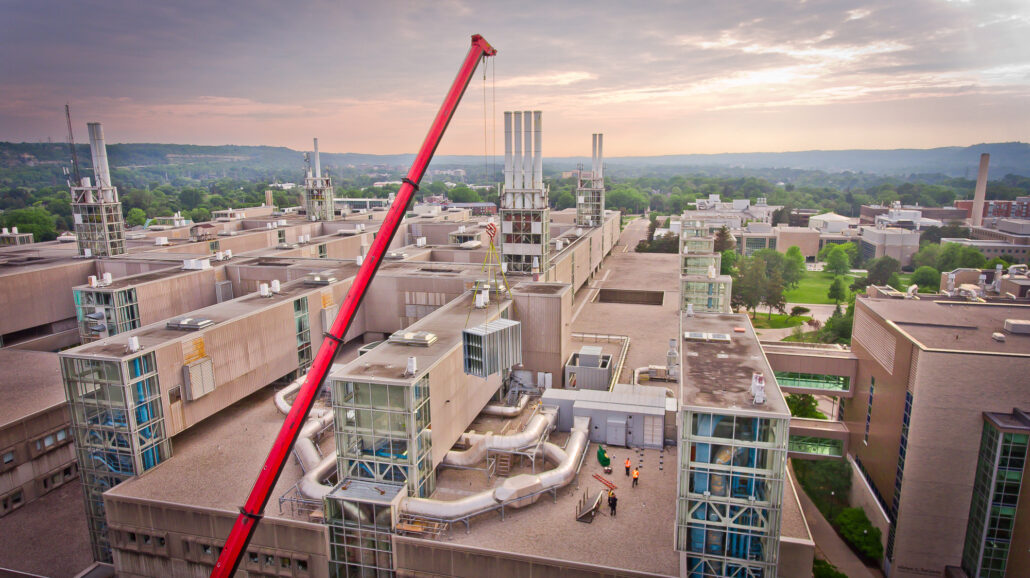Whether you are designing a new facility in a noise-sensitive location or need to retrofit your existing facility to comply with local ordinances, adhering to a few general principles can dramatically reduce both the complexity and the cost of your noise abatement program.
Understand Your Compliance Goals
Begin by clarifying your compliance objectives. Rather than aiming to eliminate complaints, focus on achieving compliance with relevant local noise regulations. This approach ensures that your initial investment is directed solely towards the necessary measures, avoiding unnecessary noise abatement efforts.
A critical part of this first step is understanding the governing noise guidelines for your jurisdiction (either State, County, or Municipal regulations could apply) and how they apply to your facility and equipment. An acoustical consultant will assist you in navigating this process. It is also prudent to ensure that local noise guidelines are sufficiently structured to support alignment with your facility’s operations and nearby neighboring communities. As we discussed in our previous blog post, “Why Facility Owners Should Want More Stringent Noise Regulations”, an inadequately established or ambiguous noise guideline could also result in challenges down the road.
Be sure to discuss the governing noise guidelines (and any potential risks associated) with your acoustic consultant, which is a perfect segue to our next recommendation…
Engage Acoustic Professionals Early in the Process
Engage an acoustic consultant early to define the path to compliance for your facility. This should be done before any physical solutions are investigated. Once the output criteria are clearly understood, an acoustical consultant will construct a detailed sound propagation model of your site and its various noise sources to assess areas of non-compliance. This step is crucial, as it is the starting point for defining any distinct noise sources that are pushing your facility outside of compliant thresholds. The key objective in a noise abatement plan is to isolate any problem sources to as granular a level as possible. This practice dramatically reduces the possibility of over attenuating, and/or attenuating sources that may not require abatement. An acoustical consultant will be integral in driving this stage of the process, thus it is best to to get them engaged as early as possible.
Request Multiple Modeling Scenarios
Ensure that your acoustic consultant provides two key outputs from their analysis: detailed performance requirements for sources found to be out of compliance, as well as some additional time for iterative analysis.
Detailed performance criteria is crucial in the development of refined noise control solutions, as any ambiguity or generalization of performance can result in unnecessarily robust sound attenuation.
Iterative analysis is essential for developing targeted noise control solutions tailored to the specific limitations of your site, helping to avoid major cost impacts that may arise when integrating noise controls into your facility. An example would be assessing an acoustic barrier versus at-source treatment (i.e. silencers, louvers, etc) to determine which is more practical and/or cost-effective to implement.
At this stage of the process, onboarding a noise control professional may be prudent to aid the iterative design process. Their expertise can often be beneficial in assessing the practicality and viability of various sound attenuation solutions.
Request Sub-Source Data 
Work with your acoustic consultants and mechanical partners in obtaining detailed “sub-source sound data” for each mechanical noise source. Sub-source data highlights the differences in sound levels across various locations on a single piece of equipment, such as air intake versus discharge, casing noise, or compressor noise. By isolating these areas, noise control providers can focus their attenuation efforts on the most problematic locations, potentially reducing attenuation costs by three times or more.
Know Your Site
When developing solutions, having comprehensive information is crucial. Noise control can impact the structure, mechanical functionality, serviceability, aesthetics, and operation of a building. Therefore, it is vital to provide technical information on these aspects surrounding the noise sources that require attenuation.
Often, the cost of integrating noise control can surpass the cost of the noise control measures themselves. To mitigate this, consider engaging additional engineering consultants, such as structural or mechanical engineers, to review these critical areas during the solution development process.
Take the Time to Evaluate All Options
Assess all possible options for reducing sound at your facility, including equipment changes (such as upgrading to quieter equipment), operational adjustments, equipment relocation, and varying levels of retrofit sound attenuation. Your engineering consultants and noise control professionals can advise you on these options.
Only Do It Once
Whichever path you choose, ensure that the approach is validated in the acoustical consultant’s site model. Verify that any solution comes with guaranteed acoustic performance, including sound data from equipment manufacturers and acoustic performance from any noise control solutions provider.

